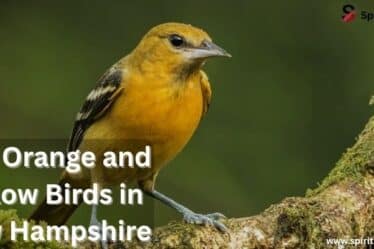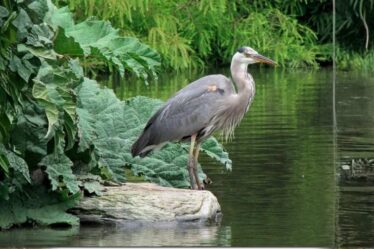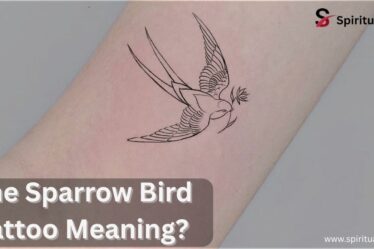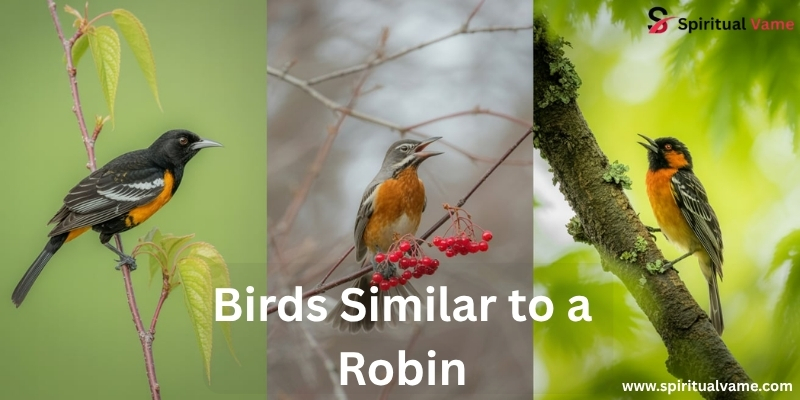
Looking for a bird similar to a robin? You’re in the right place. Robins are easy to spot, but many birds look like them. Some have red chests. Others sing sweet songs. They may live in the same places too. In this guide, we’ll show you birds that look or act like robins.
Nature is full of surprises. You’ll find more than one bird similar to a robin in your own backyard. These birds may be smaller or bigger, but they share a lot in common. We’ll help you tell them apart. By the end, you’ll know how to spot a bird similar to a robin with ease and confidence.
Birds That Look Like Robins
Many birds in North America share visual traits with robins. It’s not just the orange coloring on their chest that creates confusion. Birds with upright postures, similar tail lengths, and even songbird behaviors might make you second-guess what you’re seeing. From black heads to soft white underparts, each of these species offers a small twist on the robin look.
Birds like the Varied Thrush, Eastern Towhee, and Red-Breasted Nuthatch are just a few of the many species with overlapping features. In this article, we’ll go through each bird one by one, helping you spot key differences in their markings, songs, or movement that set them apart from the true robin.
Varied Thrush
The Varied Thrush might be the most confusing robin lookalike. At first glance, it has the same overall orange and black coloring. Its body shape, size, and even its movements look remarkably robin-like. However, look closely and you’ll notice a few distinct features. The Varied Thrush has a dark band stretching across its chest, and a bold eyebrow stripe above its eye. Its plumage is brighter, with deeper orange on the breast and rich, dark wingbars.
This songbird lives mostly in the forests of the Pacific Northwest. Its call is haunting and drawn-out, quite different from the cheerful melodies of the American Robin. Though both birds belong to the thrush family, the Varied Thrush tends to stay in wooded areas more than open lawns, and it prefers cooler, shady habitats. The mix of orange, black, and varied colors gives this bird a striking look that’s easy to mistake until you pay attention to the details.
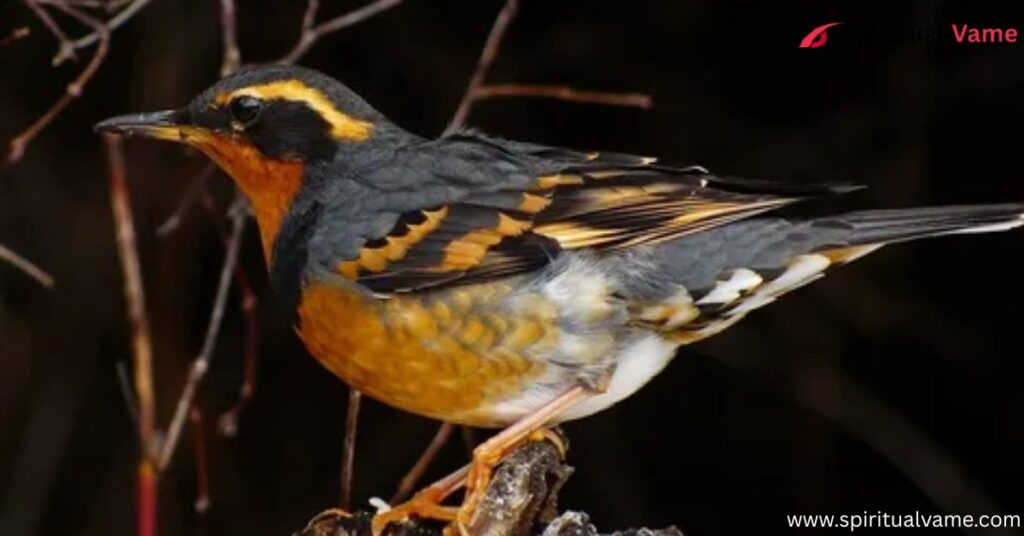
Orchard Oriole
The Orchard Oriole is a sleek, slim bird with dark plumage that includes a deep orange or rusty-red underparts and black head. While smaller than a robin, it has a similar body shape and color pattern, especially in poor lighting or when viewed from a distance. The adult male has a strong contrast between its chest and wings, and although it lacks the gray back of a robin, its coloration is enough to cause confusion.
You’ll often find this bird singing from the tops of trees or darting through orchards, parks, and suburban gardens across the eastern half of the United States. Unlike robins, Orchard Orioles prefer to stay a bit higher in the tree canopy. But thanks to their bold orange, black, and white colors and slender build, they make the list of birds that look like robins at first glance.
Spotted (and Eastern) Towhee
The Spotted Towhee and its cousin, the Eastern Towhee, are both members of the songbird family and often catch birdwatchers off guard. These birds have a similar size and stance to the robin, and their reddish, rusty sides and white underparts match the robin’s familiar chest coloring. However, towhees have a distinctive black hood, red eyes, and white spots on their wings and back.
The Eastern Towhee has fewer spots but still shares that mix of bold black, rust, and white. Both species forage by scratching in the leaf litter and have a habit of flicking their tails, which are long and dark with white feathers underneath. Their beak is more stout, and their plumage tends to look cleaner and more defined than the robin’s. Whether you spot the spotted or the eastern kind, a second glance usually reveals the truth.
Black-Headed Grosbeak
The Black-Headed Grosbeak sports a rich orange breast, black wings, and a thick beak built for cracking seeds. Though its plumage can make it look like a large robin from afar, the shape of this bird gives it away. It has a bulkier build, a more rounded body, and a distinctive head that’s all black. Males are especially striking during the breeding season.
These birds live primarily in the western United States and are often found in forest edges or wooded backyards. They sing a beautiful song that resembles the robin’s, adding to the confusion. But look for that big, seed-crunching bill, and you’ll quickly see the difference between this grosbeak and a robin.
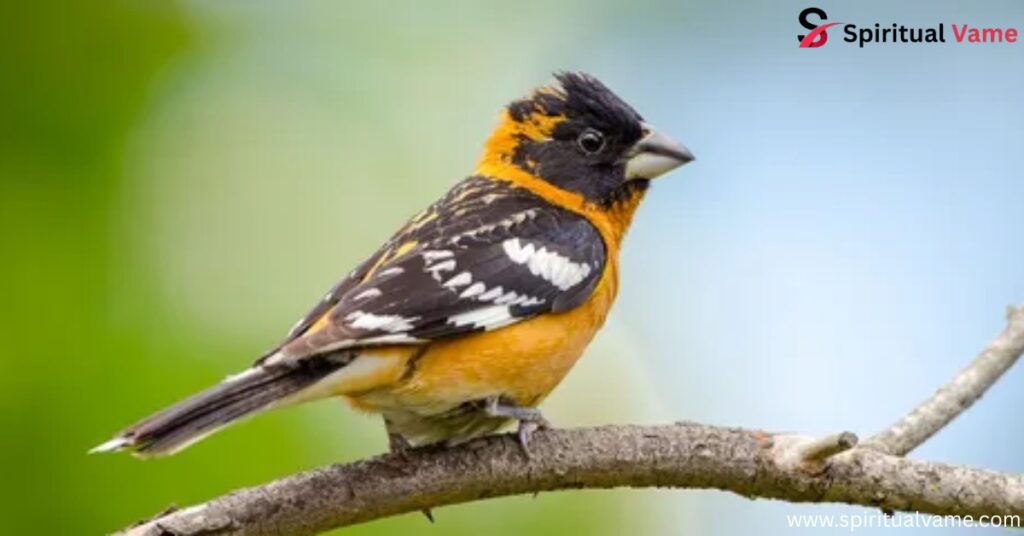
Hermit Thrush
Another thrush that resembles a robin is the Hermit Thrush. It has soft brown upperparts and a slight reddish tone in its tail, which gives it a subtle robin-like appearance. This bird is more understated, with less vivid coloring, but it shares the robin’s posture and similar size. It often hops through leaf litter just like a robin, making it easy to mistake from a distance.
What sets the Hermit Thrush apart is its voice. Its clear, flute-like song is often heard in dense forests or wooded backyards during migration. Although it lacks the robin’s bold orange chest, the similarity in behavior and body shape places it firmly in the list of birds often mistaken for robins.
Red-Breasted Nuthatch
The Red-Breasted Nuthatch is much smaller than a robin but still manages to mimic it with its rusty-cinnamon underparts and bold coloring. Its plumage features a bluish-gray back, a black cap, and a white stripe above its eye, giving it a distinct look up close. Still, that flash of red on its chest and the way it moves around trees can throw off quick identifications.
This little songbird climbs headfirst down tree trunks and makes nasal calls, totally different from the robin’s cheerful chirps. But its bright coloring and active behavior often catch the eye of birdwatchers and make it one of the most common birds confused with robins in wooded areas.
American Redstart
With its bold reddish-orange patches and flashy tail, the American Redstart grabs attention. This tiny songbird flits around in search of insects, spreading its tail and wings to flush prey. It’s mostly black with bright orange patches on the breast, tail, and wings, and although much smaller than a robin, the movement and color pattern can fool you.
Unlike robins, redstarts rarely spend time on lawns. Instead, they move quickly through trees, often near streams or woodland edges. Their flashy behavior and overlapping migration range with robins make them a frequent source of misidentification.
.
Common Redstart
Topping the list is the Common Redstart, a small but brightly colored songbird with a reddish-orange tail and striking markings. Though it differs in size, its colors and fast, fluttery movements often lead to confusion. Its presence in overlapping habitats during migration makes it the most commonly misidentified bird similar to a robin.
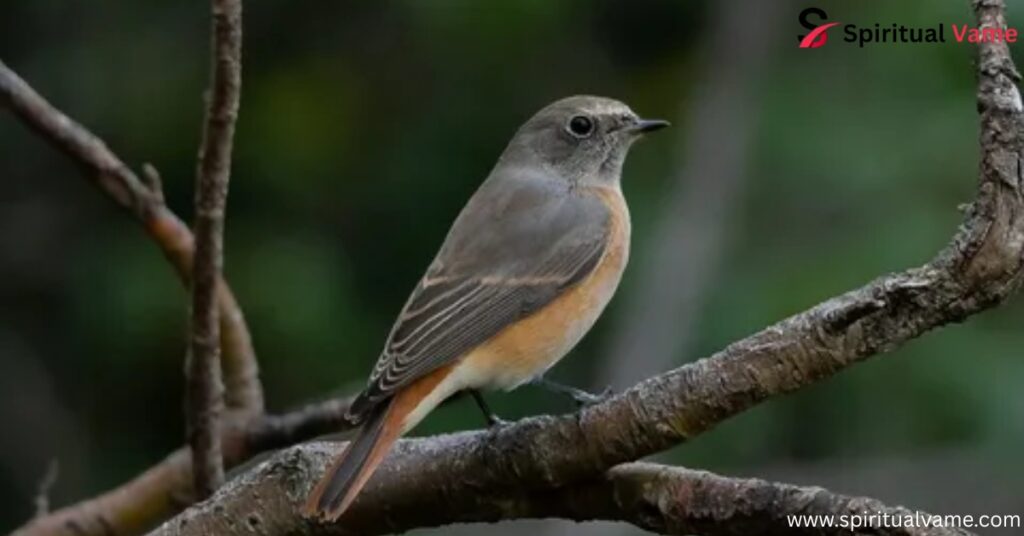
Birds That You Might Mistake For a Robin
Across the U.S., ten birds often confuse birdwatchers with their robin-like looks. The Red-Breasted Nuthatch, Baltimore Oriole, and American Redstart lead the list with bold colors and similar postures. Others like the Spotted Towhee, Orchard Oriole, and Varied Thrush share the classic robin colors. Add in the Black-Headed Grosbeak, Red-Winged Blackbird, Eastern Towhee, and Blackburnian Warbler, and you’ve got a lineup of robin lookalikes from coast to coast.
Final Thoughts
When it comes to spotting birds in your backyard, it’s easy to mistake a vibrant bird for a robin. The key is in the details—eye markings, size, shape, behavior, and song. Use this guide to sharpen your birdwatching skills, and next time you see a flash of orange, take a closer look. It might not be a robin at all.

